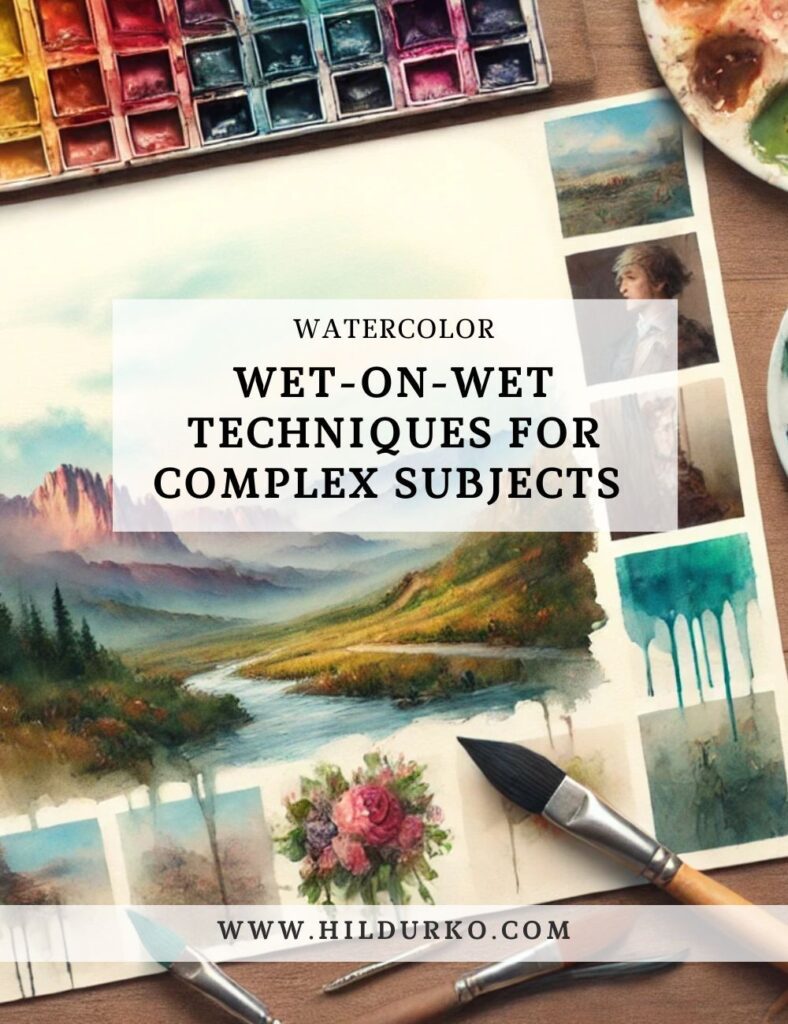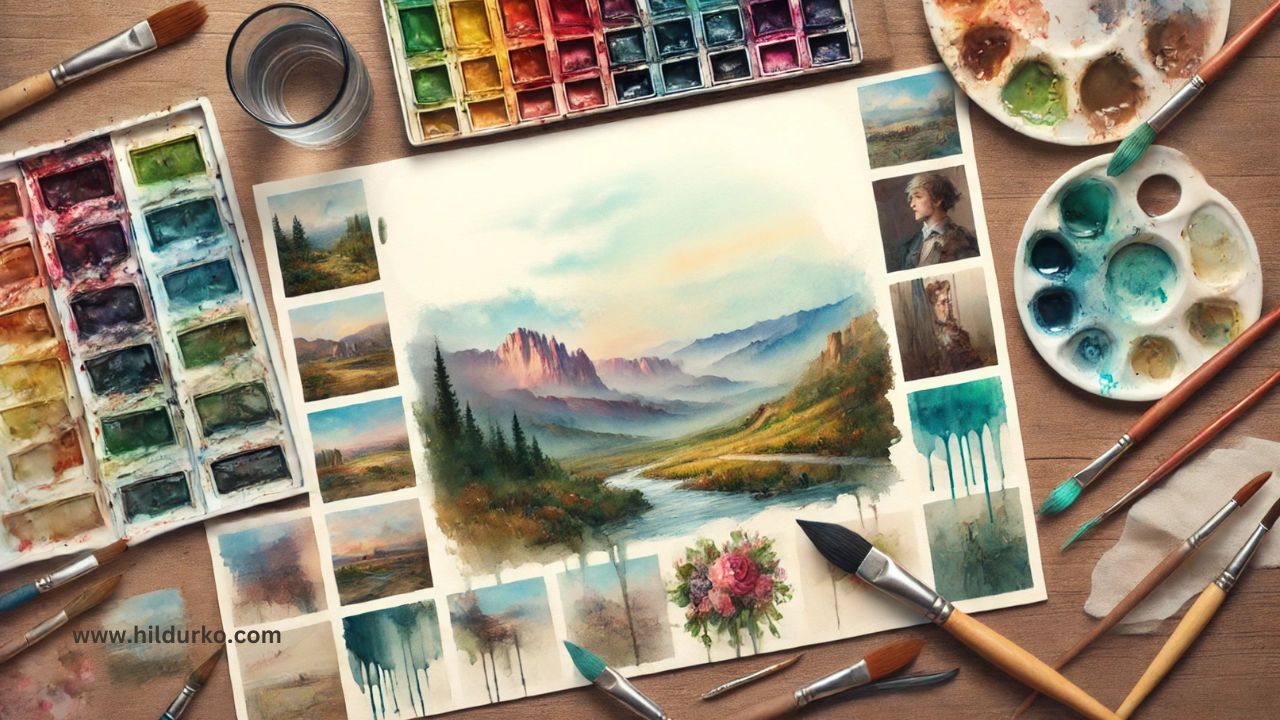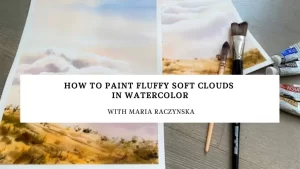Why it might be popular:
Wet-on-wet techniques are a foundational and exciting aspect of watercolor painting. Many artists are eager to achieve the beautiful soft blends and gradients that this method offers, especially when tackling complex subjects like portraits or detailed landscapes. This technique provides unique advantages, such as:
- Soft Transitions: Achieving smooth transitions and gradients that add a professional touch to your artwork. These transitions can seamlessly blend colors and edges, creating a natural flow within the painting.
- Fluidity and Movement: Capturing the natural flow of water and pigment brings a dynamic and lively quality to your pieces. As colors mix and spread on the wet surface, they create organic patterns that can add a sense of spontaneity and energy.
- Emotional Effects: The ethereal, dreamlike results can evoke powerful emotional responses from viewers, making your work truly memorable. These soft blends can create calming, serene atmospheres or, conversely, passionate, dramatic scenes depending on your color choices and application.
Scarcity of Tutorials:
While basic wet-on-wet techniques are widely available, detailed guides focused on complex subjects are less common, making them precious gems when discovered. The reasons for their rarity often include:
- Elevated Skill Level: Mastering wet-on-wet techniques on intricate subjects is a rewarding challenge that pushes artists to new levels of expertise. It requires a deep understanding of watercolor behavior, timing, and brush control, which can be a thrilling journey for dedicated artists.
- Unique Results: The unpredictable and variable outcomes ensure that each piece of art is one-of-a-kind, making the journey exciting. Artists can embrace the unexpected, discovering new techniques and effects through experimentation.
- In-Depth Instruction: Demonstrating these techniques on detailed projects offers enriching experiences and insights, both for the instructor and the learner. Detailed tutorials often provide a comprehensive look at overcoming common challenges such as maintaining detail while keeping blends soft and managing the wetness of the paper for optimal control.
For artists willing to dive into these deeper waters, mastering wet-on-wet techniques for complex subjects can lead to truly stunning and distinctive works of art. This journey not only enhances technical skills but also opens up new avenues for creative expression. With patience and practice, artists can unlock the potential of wet-on-wet techniques to create pieces that captivate and inspire, making this a rewarding endeavor that can set their work apart in the art world.
Check out kelogsloops video on Wet on Wet Techniques
For more from kelogsloops
- WEBSITE & PRINTS: https://kelogsloops.com
- INSTAGRAM:
 / kelogsloops
/ kelogsloops - FACEBOOK:
 / kelogsloops
/ kelogsloops - DEVIANTART: http://kelogsloops.deviantart.com
Check out Ellen Crimi-Trent- Artist video on Watercolor Wet on Wet techniques for dynamic results
For more from Ellen Crimi-Trent- Artist
- Patreon: https://www.patreon.com/ellencrimitre…
- Website: https://www.ellencrimitrent.com
- Instagram!:https://www.instagram.com/ellencrimit.com
- Ticktock: @ellenlovesart
LIKE THIS POST?
Share the link on your social media
or pin the image below to your Pinterest board!






